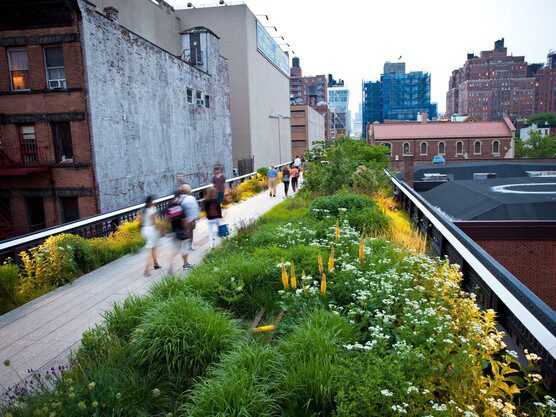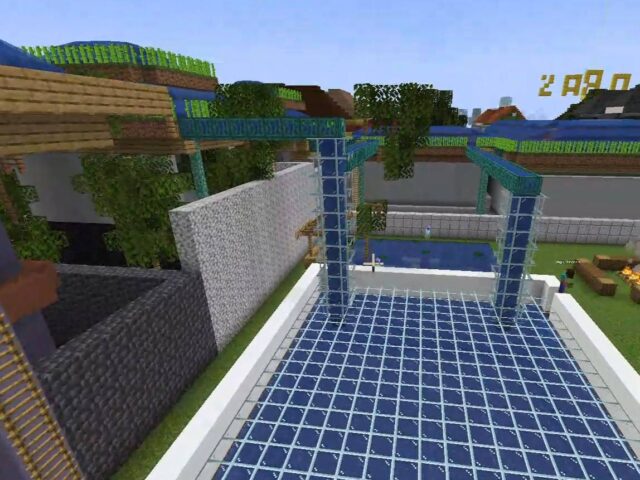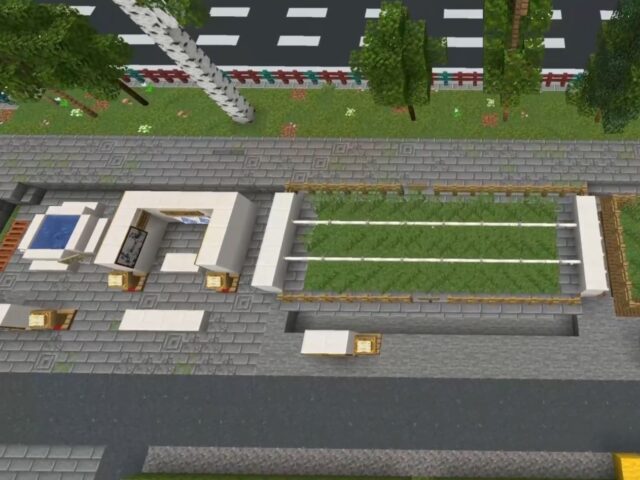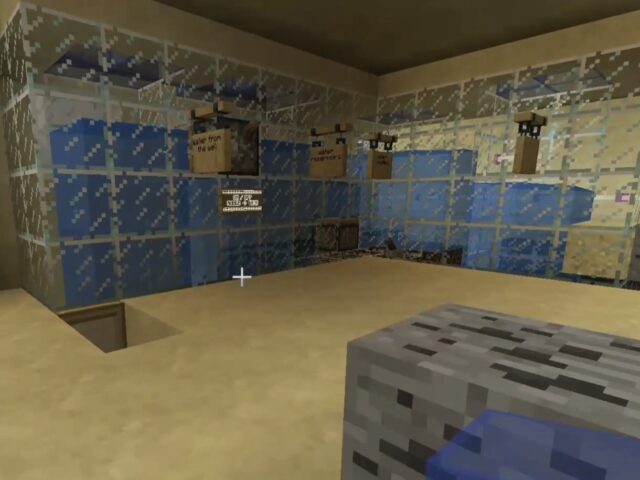Greening can refer to a few different concepts depending on the context, such as Environmental Greening, Financial Greening, and Agriculture Greening. Yet, in this module, we will explain about Urban Greening, which refers to the practice of increasing vegetation and green spaces within urban areas.
Urban greening, also known as urban greenery or urban vegetation, refers to the intentional incorporation of green spaces, vegetation, and natural elements into urban environments such as cities and towns. The purpose of urban greening is to enhance the quality of life for residents, mitigate the environmental impacts of urbanization, and create more sustainable and pleasant urban spaces. Urban greening helps improve air quality, reduce the urban heat island effect, and provide recreational spaces for residents.
Urban greening encompasses a wide range of practices and initiatives. Here are some examples of urban greening:
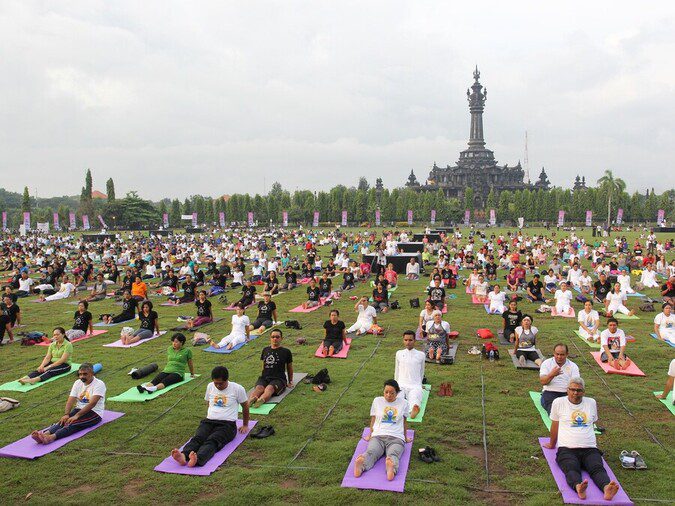
Public Parks and Gardens
Creating and maintaining parks, botanical gardens, and public green spaces provides residents with areas for recreation, relaxation, and connection with nature.
Image: Lapangan Puputan Renon as public park for recreation and relaxation (Source: Metro Bali1)
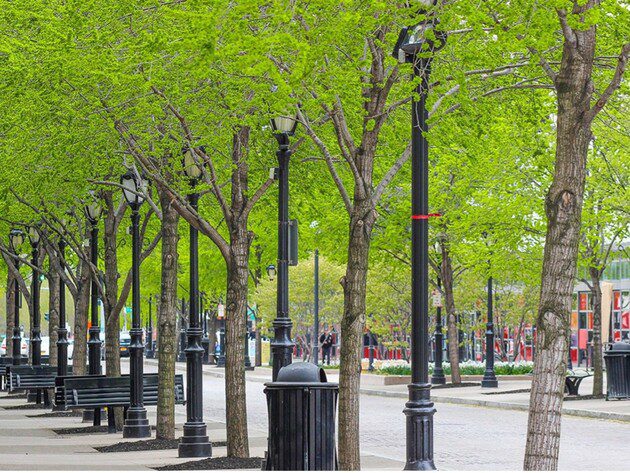
Street Trees
Planting trees along streets and sidewalks not only beautifies urban areas but also provides shade, reduces air pollution, and improves overall air quality.
Image: Street trees provide a wide range of environmental and aesthetic benefits. (Source: Jonite2)
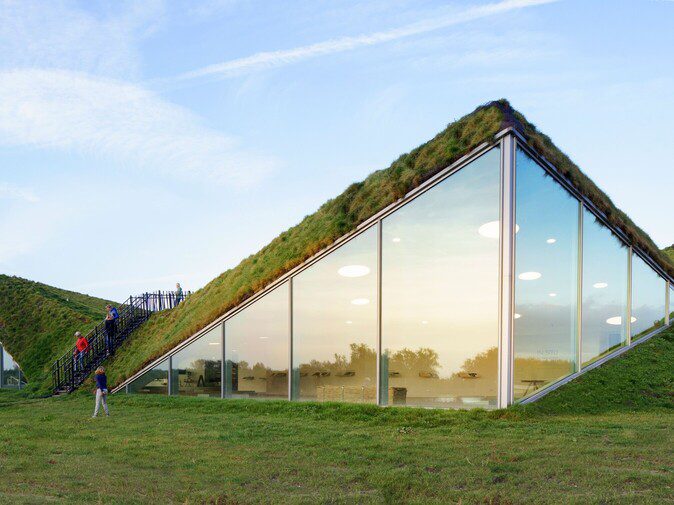
Green Roofs
Installing vegetation on rooftops of buildings helps with insulation, reduces energy consumption, manages stormwater runoff, limit heat absorption and provides habitat for birds and insects.
Image: Green roof that offers wide variety of ecological benefits (Source: Architectural Digest3)
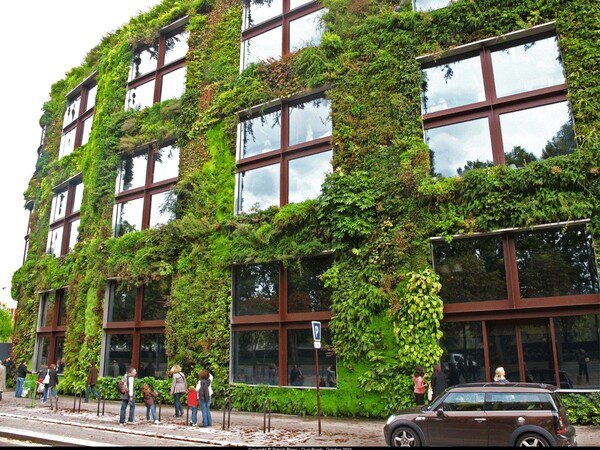
Green Walls
Incorporating vertical gardens on building exteriors or interior walls adds aesthetic value, reducing rainwater runoff, filtering pollutants out of the air, improves indoor air quality, and can help regulate indoor temperatures.
Image: Green walls create highly-efficient building envelopes (Source: Architizer4)
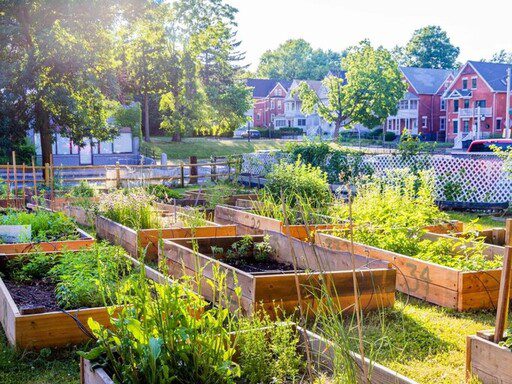
Community Gardens
Allocating spaces for community gardening allows residents to grow their own produce, encourages community interaction, and promotes local food production.
Image: Community garden: a way to connect with your neighbors (Source: Socio-hub5)
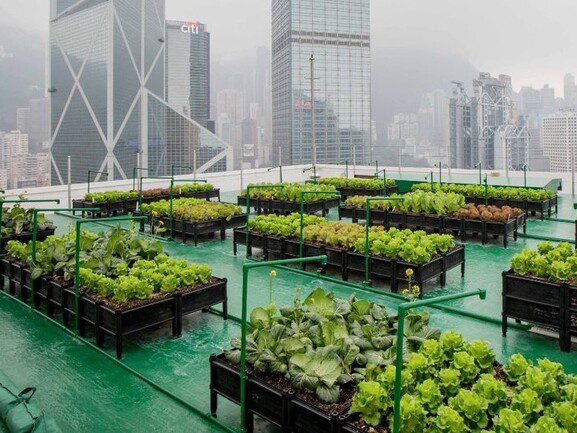
Urban Farms
Establishing small-scale farms within urban areas enables the cultivation of fruits, vegetables, and herbs while promoting sustainable food production.
Image: Urban farming as one the the moves toward sustainable living (Source: Agritecture6)
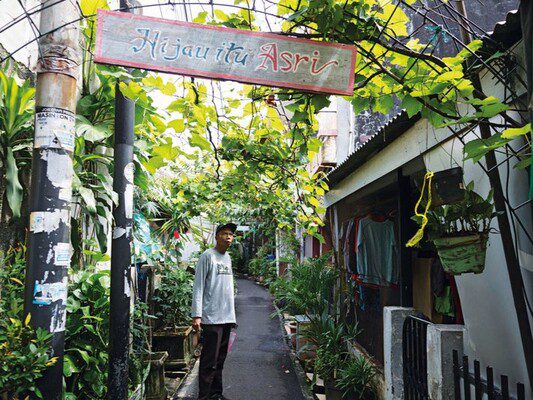
Green Alleys
Transforming alleys with permeable surfaces/pavements, trees, and vegetation can mitigate stormwater runoff and improve the aesthetics of urban backstreets.
Image: Green Alley Project in Jakarta (Source: Now Jakarta7)
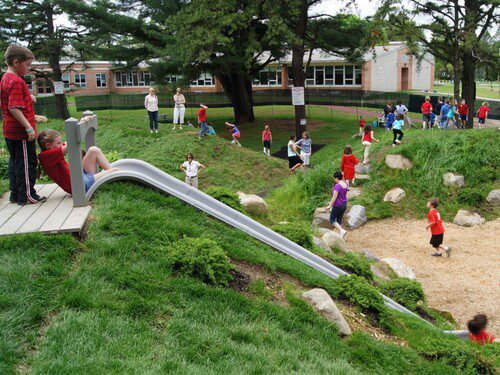
Natural Playgrounds
Designing playgrounds with natural materials like logs, rocks, and water features encourages children to engage with the natural environment during play.
Image: A natural playground is a play environment that consists of elements and textures from the earth (Source: Natural Playgrounds8)
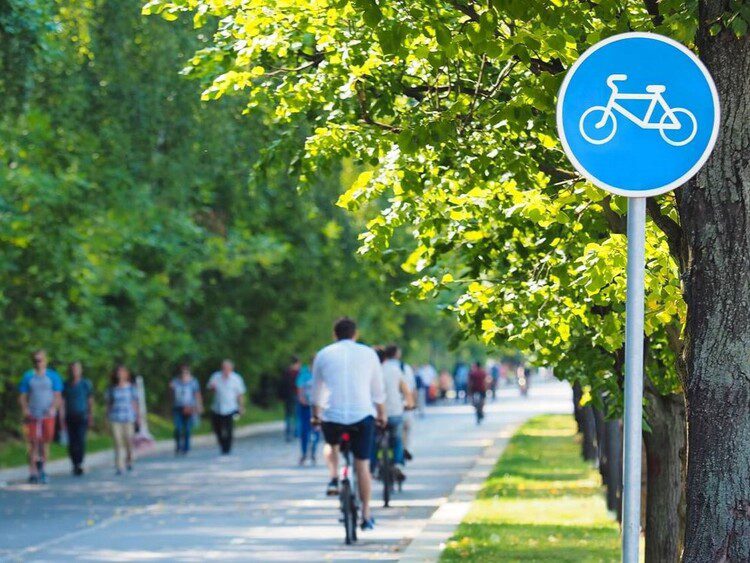
Bicycle and Pedestrian Paths
Creating green corridors with walking and biking paths lined with trees and vegetation promotes alternative transportation and enhances the urban environment.
Image: Bicycle paths and green spaces provides direct benefits in terms of physical activity, air quality and mental health (Source: Udem Nouvelles9)

Green Infrastructure
Incorporating natural elements into urban planning, such as rain gardens, bioswales, and retention ponds, helps manage stormwater and improve water quality.
Image: How bioswales works as an example of green infrastructure (Source: The Watershed Project10)
These examples illustrate the diverse ways in which urban greening initiatives can be implemented. Urban greening is vital in addressing the challenges posed by urbanization, such as air pollution, heat island effects, loss of biodiversity, and decreased green space. It contributes to making cities more livable, resilient, and sustainable by creating spaces that benefit both people and the environment.
Source:
- https://metrobali.com/hari-yoga-internasional-2016-digelar-di-lapangan-renon/
- https://insights.jonite.com/11-benefits-of-street-trees
- https://www.architecturaldigest.com/gallery/green-roof-living-roof-designs
- https://architizer.com/blog/product-guides/product-guide/eantka-green-walls/
- https://socio-hub.com/urban-problems/community-garden-the-path-to-a-flourishing-neighborhood/
- https://www.agritecture.com/blog/2018/5/2/the-future-with-urban-farming
- https://www.nowjakarta.co.id/urban-farming-and-green-alley-pilot-program-the-next-big-green-for-jakarta/
- https://www.naturalplaygrounds.com/about
- https://nouvelles.umontreal.ca/en/article/2022/10/13/bicycle-paths-and-greenery-are-concentrated-in-affluent-neighbourhoods/
- https://thewatershedproject.org/rain-gardens-bioswales/

